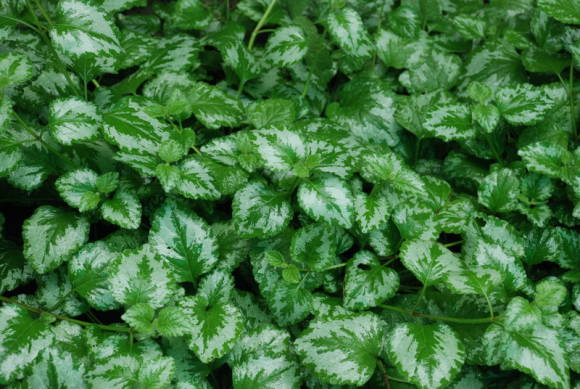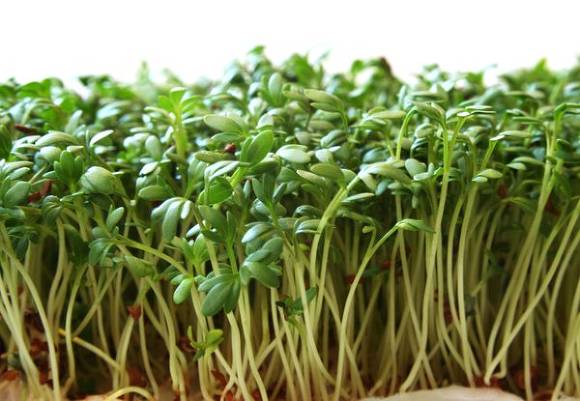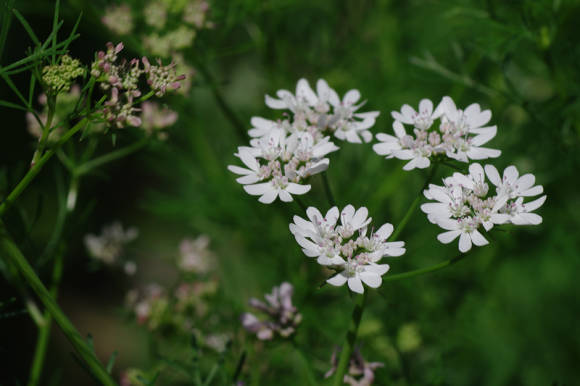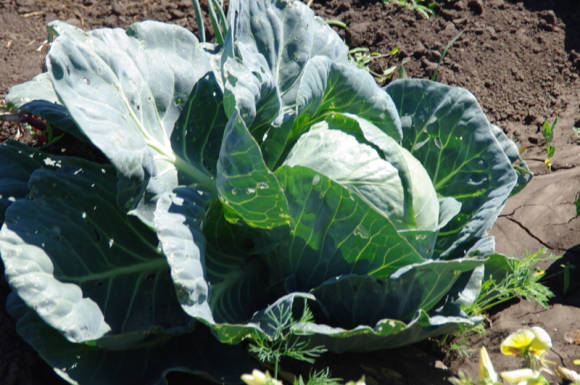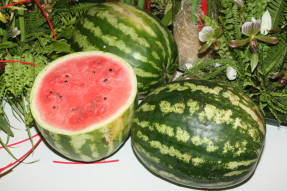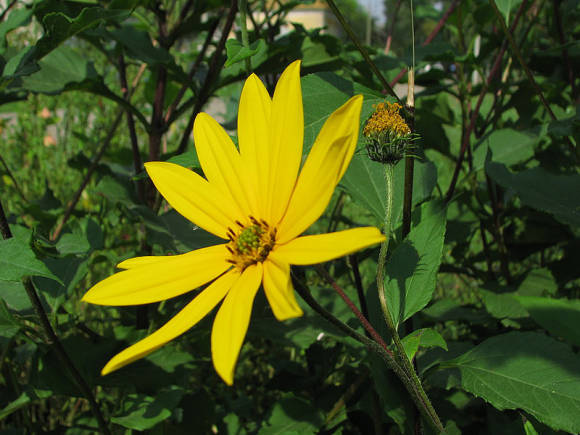For some reason, most gardeners have an established opinion that it is very easy to grow potatoes - planted in May, spud in June, harvest in September - that's all the care. But, to put it mildly, this is far from the case. To get a Dutch potato crop, Dutch planting maintenance is required in the summer.
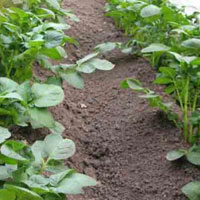 Hilling potatoes Hilling potatoes |
When potatoes are planted in spring with sprouted tubers, seedlings appear in 12-15 days, not germinated - in 18-24 days. During this time, the entire surface of the soil will be covered with weeds, and after the rains a dense crust will form. To avoid this, the first loosening of the soil must be carried out 5-6 days after planting. It improves the supply of oxygen to plants, especially on heavy clay soils, kills germinating weeds in the "white thread" phase, which are very vulnerable at this time, and helps to retain moisture in the soil. In this case, it is very important not to be late with the first hilling of plants.
The roots of potatoes grow not only in depth, but also in breadth, which is clearly visible during hilling, if the seedlings have already outgrown the phase of the first hilling. In this case, the hoe damages part of the roots that are close to the soil surface. And the roots of potatoes are restored very slowly. After the first hilling, a mound up to 10-12 cm high is formed, from which the tops of plants 4-5 cm high stick out. A week after the first hilling, this work must be repeated, but more carefully so as not to damage the seedlings. The height of the mound will then reach 20 cm or more. Many experienced gardeners carry out the third hilling of plants during potato flowering.
It is better to hilling plants on warm sunny days, when disturbed weeds take root less well, and potato plants are not too brittle. At the same time, carefully cut the weeds near the bush with a sharp hoe and then shovel the soil onto them from the aisle. And the resulting groove in the aisles must be loosened to a depth of 8-10 cm so as not to leave its own marks and traces of a hoe.
Top dressing.
To get a good crop of tubers, the potatoes need to be fed. But this must be done no later than mid-July, otherwise the ripening of the tubers may be delayed.
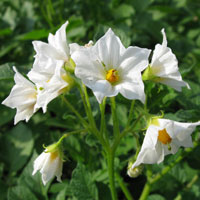 Flowering potatoes |
First feeding carried out during the growth of the tops, if the stems are thin and pale green. To do this, 1 teaspoon of urea and 1.5 cups of humus are added to 1 running meter of a potato strip. Very useful at this time and "liquid composts" from weeds.
Second feeding carried out during the budding of plants. For this, 3 st. tablespoons of wood ash and 1 teaspoon of potassium sulfate. This dressing accelerates the flowering of potatoes.
Third feeding done during flowering to accelerate the formation of tubers. To do this, make 2 tbsp. tablespoons of superphosphate per 1 meter of strip.
But what if by the time the rows close, the thick and long stems with dark green leaves have already died, and the flower buds are still not visible? The reason is quite clear - your plants are fattening because you have applied excessive doses of nitrogen fertilizers. In this case, the tops must be shortened by a quarter, the ash must be added to the soil by 1 glass per 1 m of row spacing, the plants must be slightly spud and watering must be temporarily stopped.
Watering.
Although potatoes, as a rule, are not watered by gardeners, they, contrary to the popular misconception that this should not be done, needs a lot of moisture. But unlike the well-known "vodokhleb" - cabbage and cucumbers - it does not need to be watered every 2-3 days. To get a good crop of tubers, it is enough to water it abundantly 2-3 times, and sometimes even less.
In certain periods of their development, potatoes react differently to the presence of moisture in the soil. When seedlings emerge and at the beginning of tops growth, plants need little moisture, and at this time there is usually enough spring water reserves in the soil.Moreover, the lack of moisture at this time even contributes to the better development of the root system of plants.
 Harvest is a reward for labor Harvest is a reward for labor |
If during budding and flowering there is a drought, then the growth of tops and tubers stops, the lower leaves turn yellow, the buds and flowers fall off. Therefore, if there is a lack of moisture in the soil during the budding period, the potatoes must be watered, moistening the soil to a depth of 20-25 cm, i.e. pouring 3-4 liters of water onto the bush. Later rains can lead to cracks inside the tubers and overgrowth (baby formation).
Second watering with a lack of moisture in the soil, it is necessary to carry out during the period of mass flowering of potatoes... In dry years, 3-4 such watering should be carried out. The next day after watering, the soil must be loosened, avoiding damage to the tops. Then it is useful to cover the soil with a thin layer of peat crumb mulch. And after flowering, the potatoes are not watered, otherwise you can provoke the appearance of late blight.
Before cleaning.
Experienced gardeners believe that rains and watering in June and early July determine the number of tubers in the bush, and in the second half of July and in August - the mass of tubers. Ogorodnikov are often worried about the powerful development of tops. Such tops provide a high yield of the tuber. But when growing potatoes in the aisles of a fruit-bearing garden and with abundant nitrogen nutrition, tubers are poorly tied in plants with highly developed tops. That is why, starting in July, it is impossible to use nitrogen fertilizers for feeding potatoes.
After the formation of potato tubers, the tops begin to age, so it is better to mow it 7-8 days before harvesting the tubers and remove it from the garden. After mowing the tops, the growth of tubers stops, the skin becomes stronger. However, you should not overexpose the tubers in the soil, as they are affected by pests and diseases and are much worse stored.

